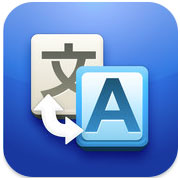
Google on Wednesday released a new version of its Translate app for Android and iOS.
The app now lets users instantly translate text in foreign languages using their smartphone cameras.
It currently translates English to and from French, German, Italian, Portuguese, Russian and Spanish — the languages supported by the Word Lens app Google purchased last year.
The translation will appear overlaid on the smartphone screen even if there is no Internet or data connection.
Translate app features available on iOS for the first time are camera mode, including Word Lens; and conversational mode, Google spokesperson Roya Soleimani told TechNewsWorld.
What Else Is New
The new Translate app also makes conversations between people speaking different languages smoother.
Android has offered real-time translation since 2013, but, with the updated version of Google Translate, the user just has to select the languages spoken and tap the mike icon.
The Google Translate app will recognize which of the two languages is currently being spoken, and will continue distinguishing between them in real time.
What’s There for iOS Users
The update, Version 3.1.0 of Google’s Translate app, is now available at the iTunes App Store.
It requires iOS 7 or later and is compatible with the iPhone, iPad and iPod touch.
The update is optimized for the iPhone 5, iPhone 6 and the iPhone 6 Plus.
Whether iOS users will take to Google Translate now that it includes advanced features remains to be seen. The app has been in the iTunes App Store for some time, but it is not among the top five best language translator apps for the iPhone, according to Heavy.com.
Lots of Catching Up to Do
Google Translate supports 90 languages; camera mode in the Translate app lets users snap a photo of text in 36 languages for translation, so the Word Lens mode has a long way to go.
Google will add more languages to the list the app covers.
Issues With Translation
“I think [Google’s] instant translation feature falls under Sturgeon’s Law,” said Andrew Lauder, CEO and founder of myLanguage, which offers the Vocre translate app for Android and iOS.
“Google and Microsoft train their translation models on all available content, which means the translations aren’t contextual,” he told TechNewsWorld.
“It’s not about boiling the ocean,” Lauder pointed out, “It’s about training on high-quality contextual data.”
The Google Translate app’s instant translation feature is faster than Vocre’s, Lauder conceded, but “what’s the point of translating if the output is crap?”
Vocre’s translation engine is “specially designed for conversations,” he said. It uses databases of words and phrases commonly used in conversations, and the company “scours the Web for translations of these.”
Translate uses statistical machine translation, Google’s Soleimani said, and “continues to improve and learn context over time.”
It’s All Good, More or Less
Computers “can listen, to a point, but what’s missing is the determination of context,” said Mike Jude, director of the Stratecast consumer communication services program at Frost & Sullivan.
This is “a complex problem and nobody has a good handle on it yet,” he told TechNewsWorld.
Nevertheless, people “do use apps like this,” Jude said.
“You get the sense of what’s being talked about and make allowances for the mistakes of the translation engine,” he noted.
As for enterprise use, said Jude, “I wouldn’t right now build any big business processes on it.”





















































